Redefining What It Means to Be a Librarian
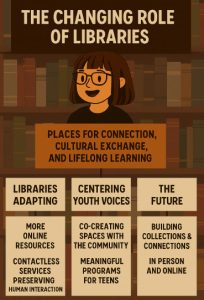
Libraries are changing, and honestly, I think it’s about time. For so long, people have seen them as just warehouses for books and quiet study spaces, but that image is changing fast. Today’s libraries are becoming places for connection, cultural exchange, and lifelong learning. This shift feels especially important right now, with misinformation everywhere and so many people trying to make sense of a complicated digital world. Librarians are changing their roles and stepping it up, while libraries continue to be trusted spaces that help people learn, grow, and stay informed. Libraries are taking their shift toward digital convenience with more online resources, catalogs, mobile checkouts, self-service kiosks, and other contactless services. These have made libraries more accessible than ever. But at the same time, the traditional side of libraries still matters. Many people still value in-person conversations with librarians, the comfort of asking another human being instead of a screen is irreplaceable. I believe the best libraries are the ones that offer both worlds: embracing new technology while still holding on to the human-centered customer services. As Stephens (2016) explains, “Being a good, innovative librarian means taking a humanistic stance toward policy, decision-making, and experimentation” (p. 6). It is with this humanistic approach that we will continue to keep libraries relevant and meaningful in today’s fast-changing world.
But while many people appreciate the ease of contactless services, there are still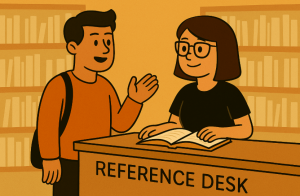 plenty of individuals who value the traditional aspects of the library experience. People often walk straight up to the reference desk either because it is their first visit or they’re not comfortable with technology or they simply find it quicker to ask for help. Sometimes it’s just easier to have a real conversation with a librarian than to click through a website and try to navigate it on your own. As Stephens (2019) reminds us, “The library should be human. The library should be there for users. The library should be built by involving users every step of the way” (p. 21). That personal connection can lead to faster, more meaningful service. Denning (2015) further explains this in his article Do We Need Libraries?, he writes, “The computer age is about the change in management mindset enabled by computerization. The customer becomes the center of the organization’s universe, rather than being on the periphery.” This is why I believe the most effective libraries are those that recognize the full spectrum of what they can offer by blending technological innovation with human-centered service, much like the Hyperlinked Library model encourages.
plenty of individuals who value the traditional aspects of the library experience. People often walk straight up to the reference desk either because it is their first visit or they’re not comfortable with technology or they simply find it quicker to ask for help. Sometimes it’s just easier to have a real conversation with a librarian than to click through a website and try to navigate it on your own. As Stephens (2019) reminds us, “The library should be human. The library should be there for users. The library should be built by involving users every step of the way” (p. 21). That personal connection can lead to faster, more meaningful service. Denning (2015) further explains this in his article Do We Need Libraries?, he writes, “The computer age is about the change in management mindset enabled by computerization. The customer becomes the center of the organization’s universe, rather than being on the periphery.” This is why I believe the most effective libraries are those that recognize the full spectrum of what they can offer by blending technological innovation with human-centered service, much like the Hyperlinked Library model encourages.
Centering Youth Voices in the Hyperlinked Library
As a library worker and hopefully a future YA librarian, I am seeing firsthand how libraries are embracing their new roles, introducing new services and programs, and remaining focused on human-centered values shows how adaptable they truly are. Modules 1 through 4 really opened my eyes to how this balance between innovation and being so human-centered. Today’s libraries are about co-creating their spaces with patrons and the community. As Casey and Savastinuk (2007) explain in Library 2.0, that libraries must move toward constant and purposeful change, where users are no longer passive consumers but active participants in shaping what services look like (p. 5). They also go on to explain how no two libraries will be the same and how each one should evolve based on its unique community needs. For example, they describe how some libraries began creating teen programs by asking teens what they wanted such as the “Rock the Shelves” concert at Gwinnett County Public Library,(p. 69). That stood out to me as it shows that community involvement opens the door to more meaningful programs and introduces elements that reflect the real interests of their community. I have seen something similar with our local libraries, for instance LAPL’s Cypress Park Branch. 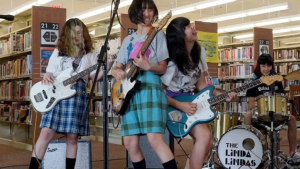 They gave local punk band The Linda Lindas their empty library as a performance space. The band filmed a music video surrounded by bookshelves, live instruments, and of course our classic library signage as their backdrop. Their record label shared the music video online and it went viral and many people were excited to see their local library on the news. I think this is a great example of how libraries can help amplify the voices of our youth outside of just providing books. Please check out the link to the video when you can: https://youtu.be/3msSlr4PkDE
They gave local punk band The Linda Lindas their empty library as a performance space. The band filmed a music video surrounded by bookshelves, live instruments, and of course our classic library signage as their backdrop. Their record label shared the music video online and it went viral and many people were excited to see their local library on the news. I think this is a great example of how libraries can help amplify the voices of our youth outside of just providing books. Please check out the link to the video when you can: https://youtu.be/3msSlr4PkDE
Michael Casey and Michael Stephens (2008) also explain the need to center youth voices, explaining how important it is to gain their trust and interests, “If we don’t get them in as kids and keep them as teens, we likely won’t see them later in life.” We have seen less teens come into many branches, mostly because they might be treated as a nuisance, but their article emphasizes that the real solution is creating safe spaces and focusing on teen outreach rather than restricting access because they’re being too loud. Another inspiring example is the “Unquiet Library” at Creekview High School in Georgia. Librarians helped create a program that turned cell phones and social media apps into tools for learning. Students were asked to “charge up your phones for class on Friday” and then used them to text responses during class discussions (Mathews, 2010). They combined the aspects of teaching, socializing, and using technology as a fun activity for teens in their library. They even had stickers for students that said “I geek the Unquiet Library,” and students wore these stickers with pride for their library which is something all YA librarians should strive for. The future of librarianship is about strengthening both collections and connections, in person and online, so they thrive together.
References:
Casey, M. E., & Savastinuk, L. C. (2007). Library 2.0: A guide to participatory library service. Medford, NJ: Information Today, Inc.
Casey, M., & Stephens, M. (2008, May 15). Embracing service to teens. Tame the Web. https://tametheweb.com/2008/05/15/embracing-service-to-teens/
Denning, S. (2015, April 28). Do we need libraries? Forbes. https://www.forbes.com/sites/stevedenning/2015/04/28/do-we-need-libraries/
KQED. (2021, May 21). Teen rockers The Linda Lindas’ “Racist, Sexist Boy” is the anthem we needed. KQED. https://www.kqed.org/arts/13897650/teen-rockers-the-linda-lindas-racist-sexist-boys-is-the-anthem-we-needed
Mathews, B. (2010, June 21). Unquiet Library has high-schoolers geeked. American Libraries Magazine. https://americanlibrariesmagazine.org/2010/06/21/unquiet-library-has-high-schoolers-geeked/
Stephens, M. (2016). The heart of librarianship: Attentive, positive, and purposeful change. Chicago, IL: ALA Editions.
Stephens, M. (2019). Wholehearted librarianship: Finding hope, inspiration, and balance. Library Journal, 144(10), 20–23. https://www.libraryjournal.com/story/wholehearted-librarianship-finding-hope-inspiration-and-balance
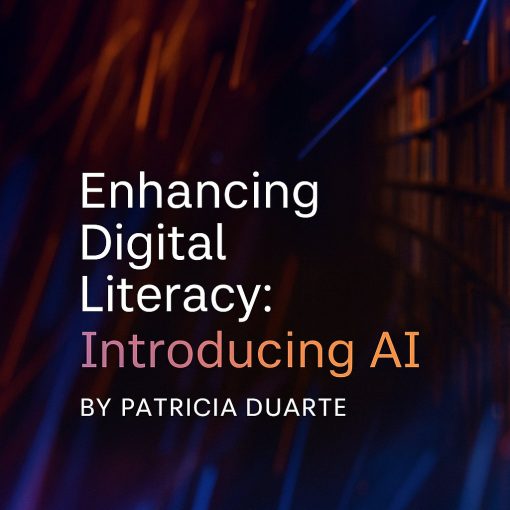
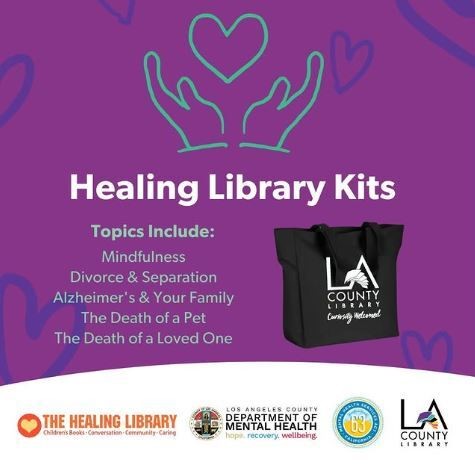
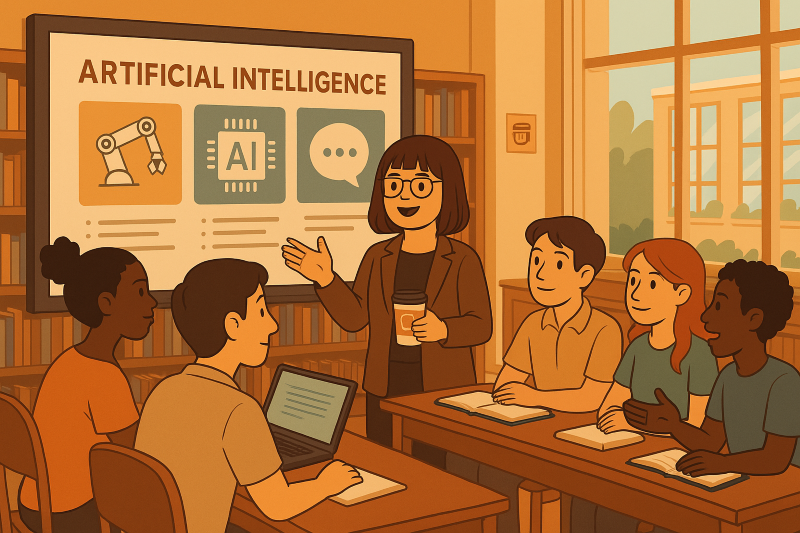
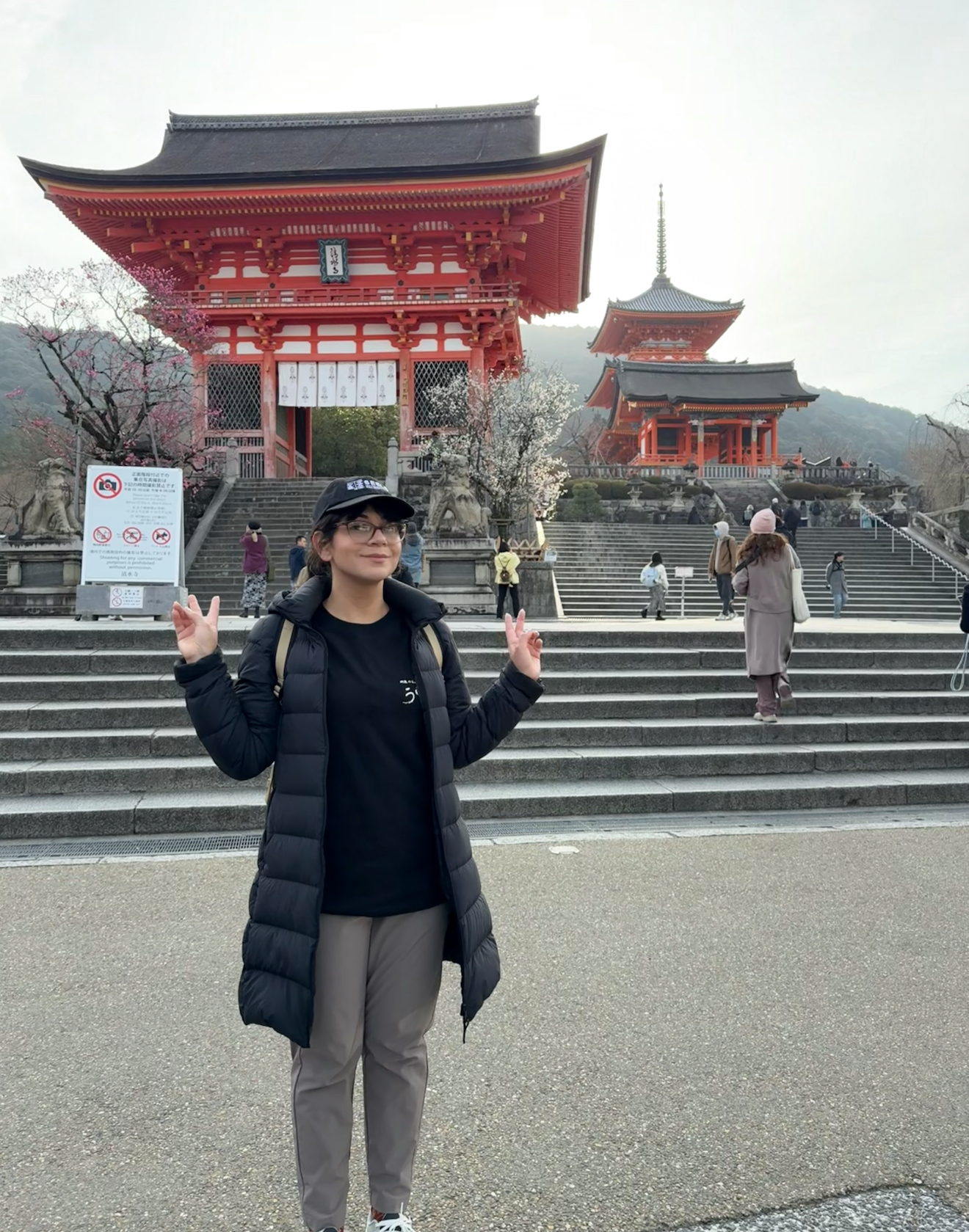
One thought on “Assignment X: From Collections to Connections”
I checked the stream that you linked and I was surprised that it was a full small event they hosted online. The library had an introduction of the members in the beginning with an interview in the middle to accompany the songs being performed. It’s an amazing example of human connection with teens during a time where events for people to meet up was minimal with the lockdowns. It was a fun way to keep up teen engagement with a “TEENtasatic Tuesday” weekly stream that hosted content geared for their young adult audience.
I also took a look at the Linda Lindas and it’s great to see that they’re still performing! Here’s a recent performance I found:
https://www.youtube.com/live/_ql2_-XN6Ys?si=DuMtWQXSAlAUZlXu